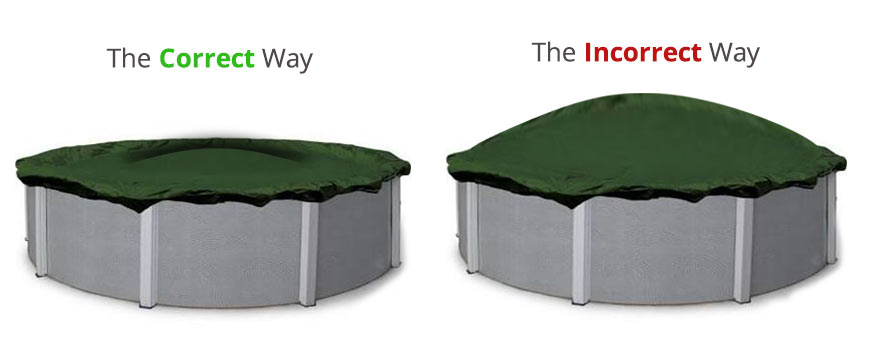Closing Your Above-Ground Pool
1. Clean your pool.
Vacuum any debris off the bottom. Balance your water levels by bringing in a final water sample to be tested. A well-balanced pool will add to the effectiveness of the winterizing chemicals to help treat your pool over the winter months.
2. Add a Bioguard Winter Chemical Kit.
Ask a Holly Hill representative for instructions on how to treat your water correctly for the winter months. Make sure to specify which pool care system you are currently using.
3. Attach plugs to the skimmer and return.
Remove the directional eyeball piece and/or light bulb on the inside of the pool and use a threaded or expansion plug in its place. Close the skimmer using a winter plate or by using a gizzmo/compensator. These products allow you to keep the water level at the normal height (3/4 of the way up the skimmer) while protecting the housing from cracks and leaks over the winter months. It is better to keep the water level at a normal height to avoid additional stress on the pool cover.
For inground pools, all water inside pvc lines should be blown out and antifreeze should be added for additional protection.
4. Disconnect and Clean out your filter.
Earth Filters: Disassemble the filter from the pool and clean the inside using a product called Strip Kwik. This will enhance the performance of the filter in the future.
Sand Filters: Disassemble the filter from the pool and dispose of the sand if it has been used for two seasons or more. Most importantly be sure to drain all water from the system.
Cartridge filters: Disassemble the filter from the pool and clean the inside cartridge using a product called Strip Kwik. This will enhance the performance of the filter in the future.
**Be sure to store the filter inside a garage or shed over the wintertime.
(Allowing the filters to sit out over the winter can cause them to crack. Most importantly be sure to drain all remaining water from the system).
5. Install the pillow
The pillow is only meant for ice expansion on above ground pools. Very little air is needed. When the water inside the pool freezes, it expands into the pillow and not into the sides of the pool walls. If the pillow is inflated too much it will deflate under the pressure over the winter. Duct tape can be used to seal the valve from leaks. Tie the pillow loosely to the ends of the pool so that it remains close to the center.
6. Install the Winter Cover
A cover is designed to lay on the pool like a blanket. Do not try to pitch the cover like a tent in an attempt to run rainwater off the cover. The cover is not designed to handle that much pressure when everything freezes. It is inevitable that rain and snow will collect on top of the cover. Allowing some water on top will not create a problem, however it is recommended to periodically pump off standing water. Thread the cable through all of the grommets on the cover and be careful not to tighten the cable around the skimmer housing. Cover clips or winter cover wrap helps to reduce damage caused by wind. Water bags are used in holding the cover in place if there is a deck around the pool.
